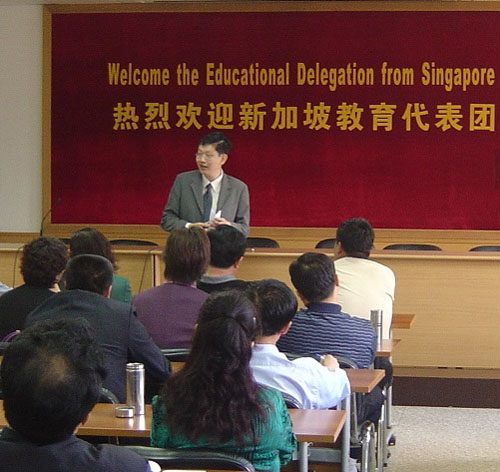
新加坡是全球公認的高性能的教育體系. 新加坡學生表現非常好 2009 項目國際學生評估 (PISA). 出 65 在這些測試中參加的國家, 新加坡的學生在閱讀中排名第五, 第二個在數學和第四名科學. “新加坡也有第二個比例最高 (12.3 百分) 學生誰是表現最好的三個領域,” 根據一個 新聞稿 從教育新加坡教育部.
如何教師激勵學生在新加坡的學校系統? How do they level the playing field between rich and poor students? How do they handle behavioral problems? Are they obsessed with testing?
These are some of the questions I received from readers after the last Q and A we did on the Singapore education system in May. This week we are honored to once again share the views of Dr. 白T卹伍對這些問題. 博士. 白T卹吳是副院長, 領導力學習, 研究生學習和專業學習的辦公室, 系主任,副教授, 政策與領導學學術組, 在國立教育研究院, 南洋理工大學, 新加坡共和國.
什麼方法激勵確實新加坡學校系統使用,以保持參與學習的孩子們?
學生的學習動機是許多教育系統的挑戰, 包括新加坡. 我們沒有一個標準化的方式或解決這一難題的最佳實踐. 但我常常問教育工作者反思: “我們怎麼指望學生的啟發,如果我們不具備教師的啟發?” 我認為我們讓學生參與學習的主要策略是要有好老師, 那些誰了解他們的學生, 根據學生量身定制的教學策略’ 輪廓, 並教訓有趣. 我也認為,我們需要挑戰我們對學生的思維方式’ motivation to learn. Young children start off with a natural curiosity and willingness to learn. 但很多人似乎經過一番教育年限已經失去了他們的動機, 儘管教師’ motivational efforts. 為什麼? 也許, 我們已經得到了棍子錯誤的結束. 我們面臨的挑戰是不是找到發展自己的學習動機的方法. 我們面臨的挑戰是不滅火! Educators should continuously cultivate and tap children’s innate interest in learning. A different philosophy suggests different strategies!
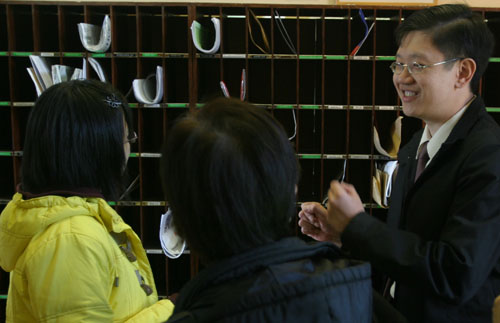
請問你的教育體制培養創新主題? 你可以從學校在新加坡已經這樣做了分享一些例子?
在 2004, 教育部發起了一項名為 “創新和企業” (我&和) 關注教育’ 創新的主題關注. 然而, 我們不注重創新,為了創新. 代替, 這是一個提醒教育工作者,讓我們的學生去嘗試新的事物,並利用自己的進取精神,以承接工程,可以給別人有益. 這是為了鼓勵學生智力好奇超越課本和考試事宜, 不得不忍受模棱兩可的勇氣和承擔可能的風險, 和有激情, persistent and resilient. 而且, 我&E是對價值觀灌輸的平台, 作為它的一部分,目的是幫助學生培養團隊精神和貢獻感到社區, 一組永恆的價值觀,如正直的接地, 社會責任和尊重他人. 換句話說, 我們正在開發的性格特徵,這將有助於我們的下一代, 無論他們成為科學家, 商人或公職人員.
每年, 教育部組織的教育部EXCEL巨星 (EXCEL通過持續的企業代表卓越 & 學習), 這是一個平台,以慶祝和分享在學校的創新實踐. 在為期兩天的活動, 各個學校展示自己的學生’ innovations to other schools and the public. Examples of student innovation for the 2012 節日的數學遊戲,是由蔡氏楚喀嗯小學的學生設計了他們的老師,以補充教學工作範圍, 為原型的 “超感救濟面膜” 包括一次性口罩,帶有內置的半透膜能分泌一種藥物如維克斯, 由兩名學生培華長老會小學.
如何老師和領導在學校系統處理行為問題?
大多數行為問題 (尤其是那些執著) are symptoms that have deeper root causes. Teachers and leaders in our schools handle students with behavioral problems by first trying to understand the deeper problems that these students face. 他們通常採取的解決問題和諮詢方法制定出長期的解決方案,可以幫助這些學生在成長成熟.
新加坡, 哲學對學生紀律就是紀律是一個教育的過程,培養學生’ 價值觀和道德官能. The aim of discipline is not to punish but to develop self-discipline in them. But this does not mean that students can escape punishment for wrongdoing. 然而, 教育工作者認識到,生根了處罰不等於解決問題.
新加坡學校允許學生甘蔗,如果必要. This applies to boys only. 然而, there are strict guidelines to determine the appropriateness of such punishment and clearly defined procedures for meting out the punishment. It is one of the last courses of action rather than the first line of remedy. 該鞭刑只能由校長或副校長進行管理, 或由專門指定和訓練有素紀律的老師. 其他老師不甘蔗學生. 對不按該學生的父母被告知他的不當行為和處罰.
預防勝於治療. 我們的學校現在教的學生的社會情緒學習, 包括 5 自我意識的核心競爭力, 社會意識, 自我管理, 關係管理, 負責決策, 使他們可以獲取的技能, 知識和部署,以成熟和生產個人誰可以自我管理,並涉及與他人相處融洽.
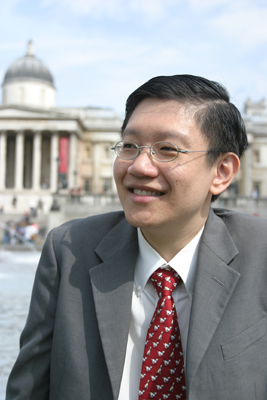
What are your thoughts on what many call an obsession with testing? If there were less testing, wouldn’t teachers and educators be able to focus on a more holistic education?
The key word here is “obsession.” 從根本上, there is nothing wrong with a test. With appropriate feedback and follow through, students can learn from a test. 然而, what many educators are concerned with now is an obsession by various stakeholders (including educators themselves) with testing and the test results. Such tests are not really motivated by learning but come with high stakes and consequences, real or perceived, related to one’s future paths. The challenge is therefore to gradually increase the number of alternative pathways for students and widen the definition of success. Testing can then indeed become a tool for learning, and not a driver for obsessive behaviors by stakeholders of education. This of course is easier said than done. I think holistic education does not refer to an education without test. I think holistic education aims to help each person find identity, 意思, and purpose in life. Suitable levels and amount of testing, focused on learning, can play a positive role in it.
How in your view should 21st-century students be assessed in a competitive world?
It is quite fashionable nowadays to say that 21st century students should learn and be assessed in 21st-century skills. 然而, beyond this broad statement, there does not seem to be an authoritative answer to what this assessment should look like in practice, taking into consideration contextual differences and the difficulties in accurately assessing certain types of learning. But I think a model of 21st-century assessment will emerge in due course, not because of what we think it should be from a theoretical perspective, but because of changes driven by the increasing proximity between schools and industries.
I feel that in the future, education will be brought closer to working life and the industries. The closer interaction between schools and industries will bring about a change in the way that students are assessed. If a school or school system continues to assess students in a way that is not relevant to the industries, that school or school system will become redundant. 另一方面, if a school or school system assesses students in a way that is closely aligned to industrial needs, the qualifications given out by the school or school system will be sought after by various stakeholders. Students who can demonstrate competence in such assessments will definitely find themselves needed by the world after they leave school. Therefore I think 21st century assessment is not a static picture but an evolving one, as schools and industries come more closely together.
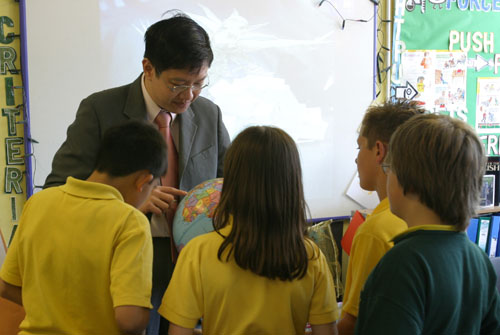
How does your education system level the playing field between children from rich and poor families?
Children from rich families have more resources at their command compared with those from poor families, and the field is never completely level. 然而, what has been done in Singapore to make education more equitable is to allow students access to educational pathways based on their merit (not on financial abilities), and to give financial aid or subsidies to poor but deserving students, so that they are not denied access to education because of financial difficulties.
例如, the Ministry of Education provides a Financial Assistance Scheme to needy Singapore citizen students so that all Singaporeans, regardless of their financial background, can benefit from education. Under this scheme, needy students receive full waiver of school fees and miscellaneous fees, and receive free textbooks and school uniforms. The government also provides a School Advisory Committees’ Fund to allow more targeted aid to students who need even more assistance. 有趣, there was recently an increasing awareness of the importance of pre-school education in a child’s development and therefore an effort on the part of the government to improve the quality of pre-schools in Singapore. A government committee was immediately set up to examine the issue of removing barriers which prevented children from low-income families from attending pre-school.
Realistically, I think we will never be able to level the playing field completely. 但, there are mechanisms to make it possible for a child from a poor family to overcome financial barriers to pursue education according to his or her potential. Singapore is too small to afford wastage in human resources.
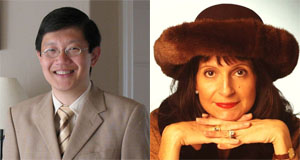
照片由博士. 吳PAK.
在全球搜索教育, 和我一樣,全球知名的思想領袖,包括邁克爾·巴伯爵士 (英國), 博士. 邁克爾座 (美國), 博士. 萊昂特司特因 (美國), 克萊克里斯坦森教授 (美國), 博士. 琳達·達林 - 哈蒙德 (美國), 博士. 馬達夫恰範 (印度), 邁克爾·富蘭教授 (加拿大), 霍華德·加德納教授 (美國), 伊馮娜赫爾曼教授 (荷蘭), 克里斯汀Helstad教授 (挪威), 讓·亨德里克森 (美國), 玫瑰Hipkins教授 (新西蘭), 科妮莉亞Hoogland教授 (加拿大), 太太. 尚塔爾考夫曼 (比利時), 博士. Eija Kauppinen (芬蘭), 國務秘書塔皮奧Kosunen (芬蘭), 多米尼克·拉方丹教授 (比利時), 休·勞德教授 (英國), 本·萊文教授 (加拿大), 巴里McGaw教授 (澳大利亞), 希夫納達爾 (印度), Ř教授. 納塔拉詹 (印度), 博士. 吳PAK (新加坡), 博士. 丹尼斯教皇 (美國), 斯瑞達拉賈戈帕蘭 (印度), 博士. 黛安·拉維奇 (美國), 肯·羅賓遜爵士 (英國), 帕西SAHLBERG教授 (芬蘭), 安德烈亞斯·施萊歇 (PISA, 經合組織), 博士. 安東尼·塞爾頓 (英國), 博士. 大衛·謝弗 (美國), 博士. 基爾斯滕都沉浸式 (挪威), 總理斯蒂芬·SPAHN (美國), 伊夫Theze (法國公立高中美國), 查爾斯Ungerleider教授 (加拿大), 托尼·瓦格納教授 (美國), 大衛·沃森爵士 (英國), 迪倫Wiliam教授 (英國), 博士. 馬克沃莫爾德 (英國), 西奧Wubbels教授 (荷蘭), 邁克爾·楊教授 (英國), 和張民選教授 (中國) 因為他們探索所有國家今天面臨的大畫面的教育問題. 全球搜索教育社區頁面
ç. M. 魯賓是兩個廣為傳誦的在線系列,她接受了筆者 2011 厄普頓·辛克萊獎, “全球搜索教育” 和 “我們將如何閱讀?” 她也是三本暢銷書, 其中 真正的愛麗絲夢遊仙境.


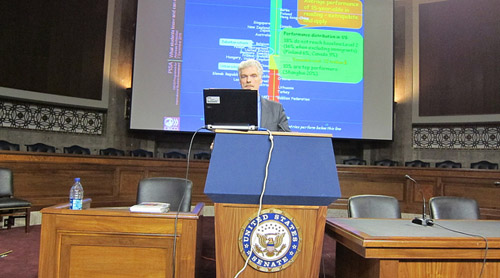
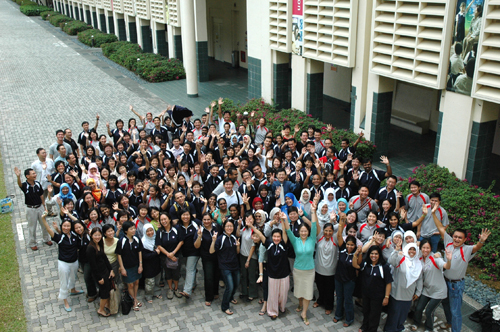
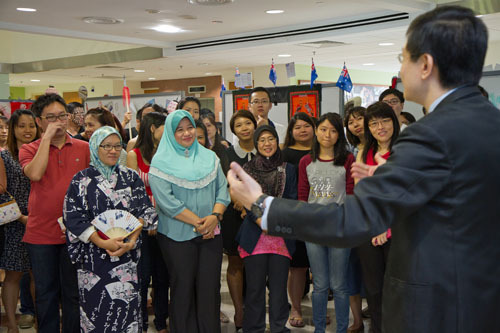

最新評論